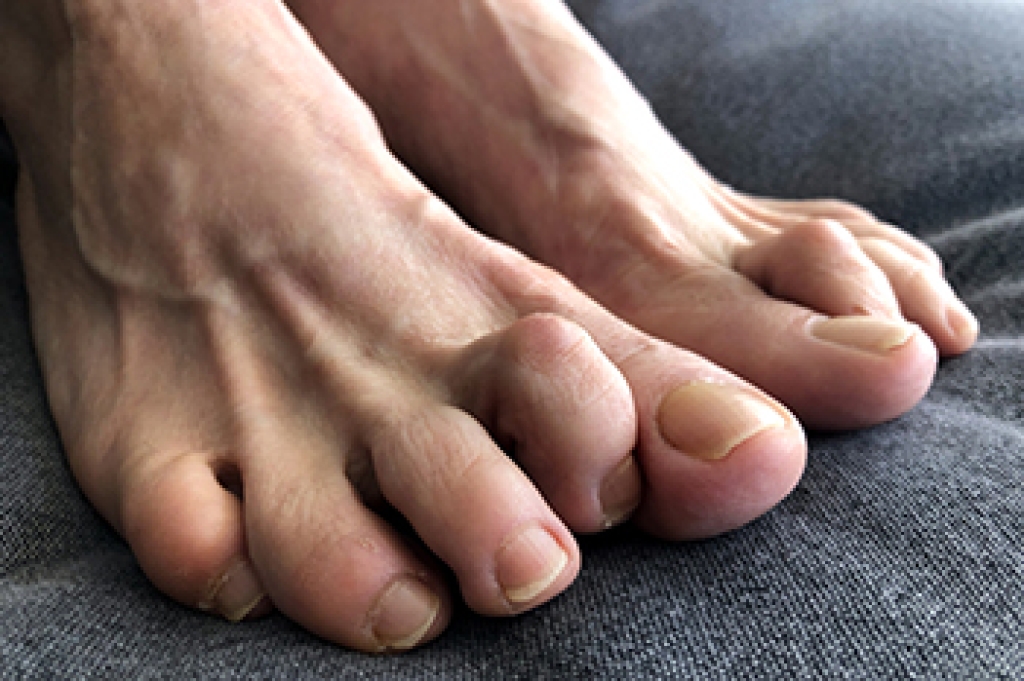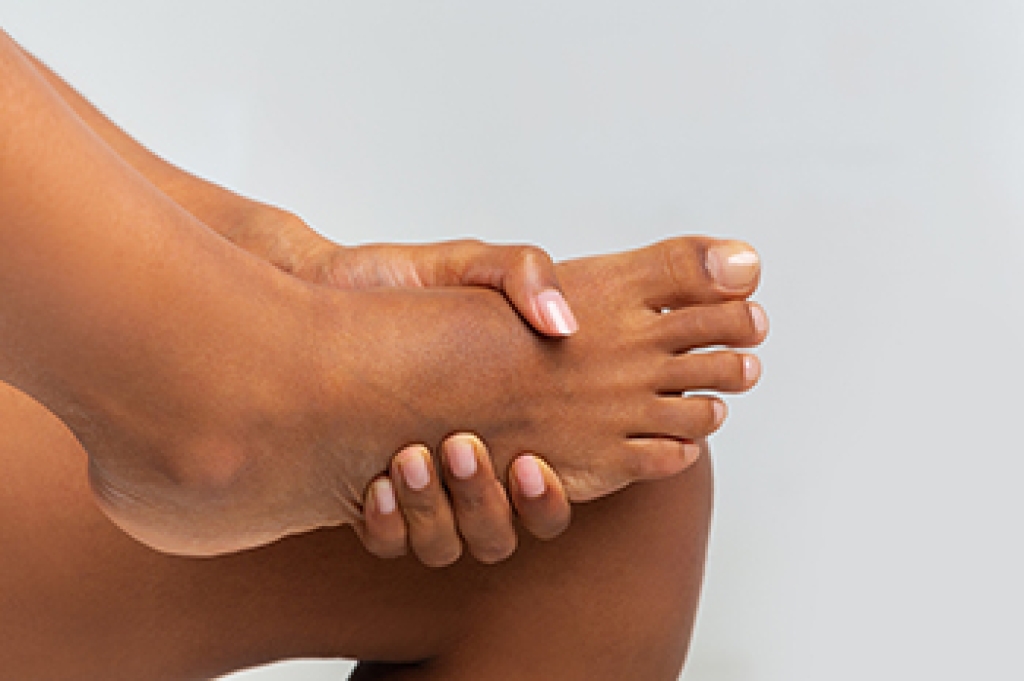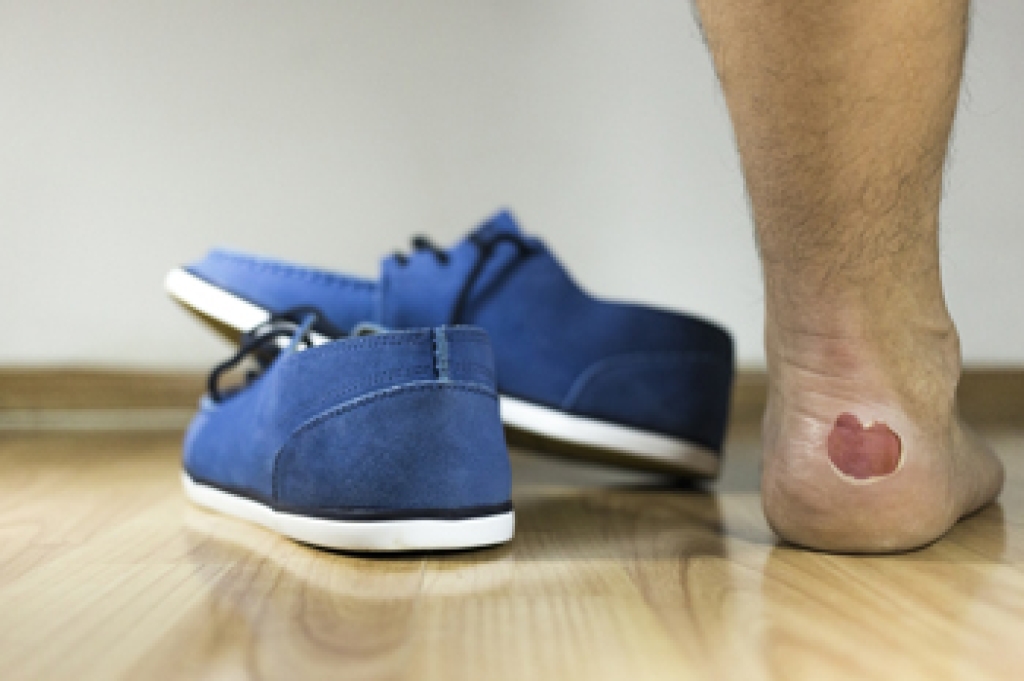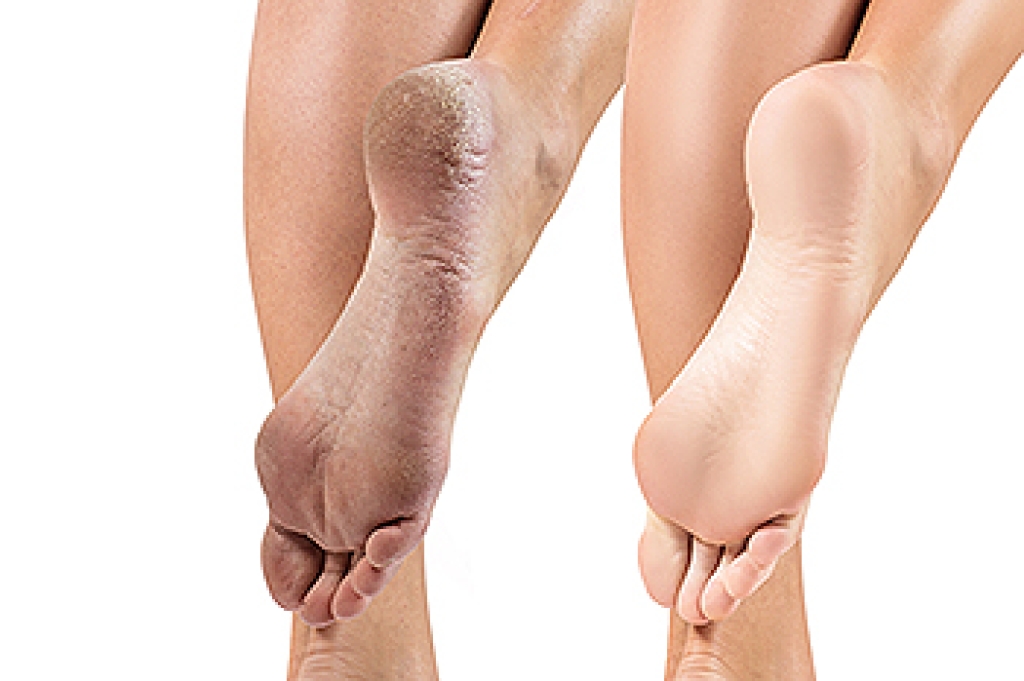
A hammertoe is a condition that typically affects the middle toes of your foot. The first joint of the toe raises up, causing a bump. Other iterations of hammertoe are a mallet toe, which affects the second toe joint, and claw toe, which affects both toe joints. Research shows that hammertoes affect more women than men, likely due to the wearing of high-heeled shoes with pointy toes. These shoes push toes forward and force them together, rather than allowing them to spread out comfortably when you stand or walk. When a hammertoe occurs, the top of the toe hits the inside of the shoe box, causing pain and friction. It also aids in the formation of unsightly corns and calluses. Over time the tendons of the affected toe may become permanently tight, for which surgical intervention may be a remedy. The tendons would be cut or realigned, and sometimes a bone would be removed to straighten the toe. If you have a painful hammertoe, it is highly recommended that you consult a podiatrist for appropriate treatment options.
Hammertoe
Hammertoes can be a painful condition to live with. For more information, contact one of our podiatrists from East Ocean Podiatry . Our doctors will answer any of your foot- and ankle-related questions.
Hammertoe is a foot deformity that affects the joints of the second, third, fourth, or fifth toes of your feet. It is a painful foot condition in which these toes curl and arch up, which can often lead to pain when wearing footwear.
Symptoms
- Pain in the affected toes
- Development of corns or calluses due to friction
- Inflammation
- Redness
- Contracture of the toes
Causes
Genetics – People who are genetically predisposed to hammertoe are often more susceptible
Arthritis – Because arthritis affects the joints in your toes, further deformities stemming from arthritis can occur
Trauma – Direct trauma to the toes could potentially lead to hammertoe
Ill-fitting shoes – Undue pressure on the front of the toes from ill-fitting shoes can potentially lead to the development of hammertoe
Treatment
Orthotics – Custom made inserts can be used to help relieve pressure placed on the toes and therefore relieve some of the pain associated with it
Medications – Oral medications such as anti-inflammatories or NSAIDs could be used to treat the pain and inflammation hammertoes causes. Injections of corticosteroids are also sometimes used
Surgery – In more severe cases where the hammertoes have become more rigid, foot surgery is a potential option
If you have any questions, please feel free to contact our office located in Deerfield Beach, FL . We offer the newest diagnostic and treatment technologies for all your foot care needs.




